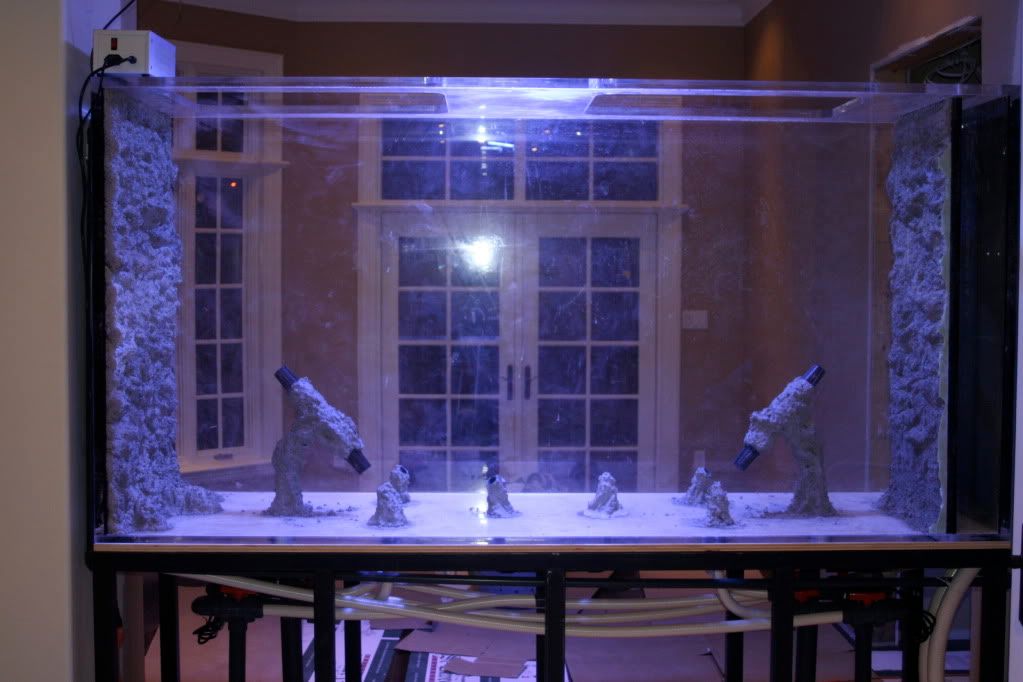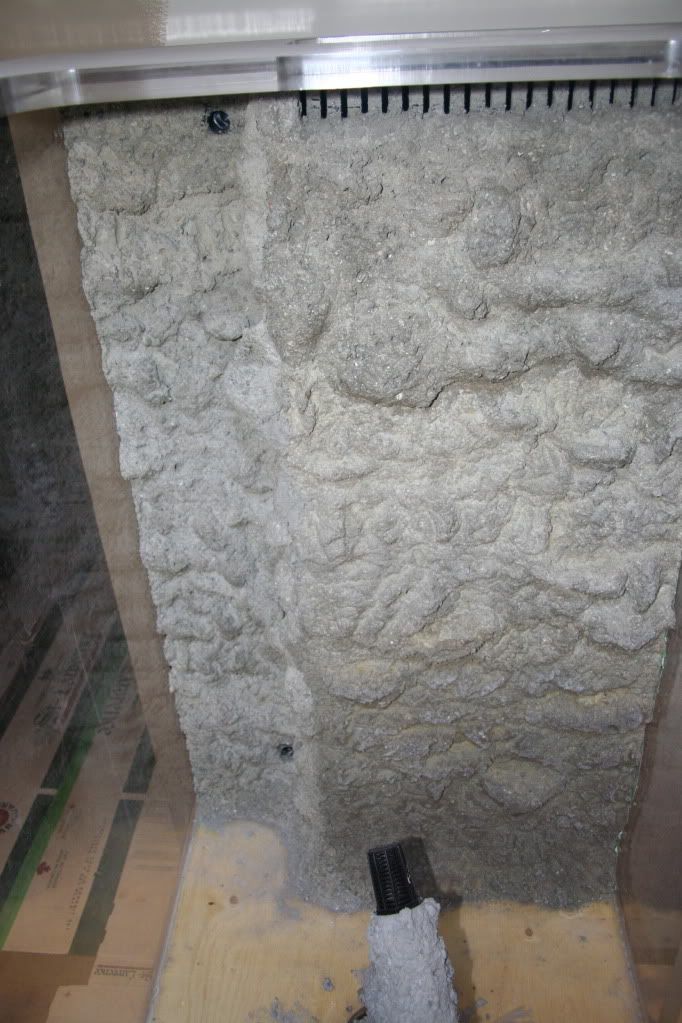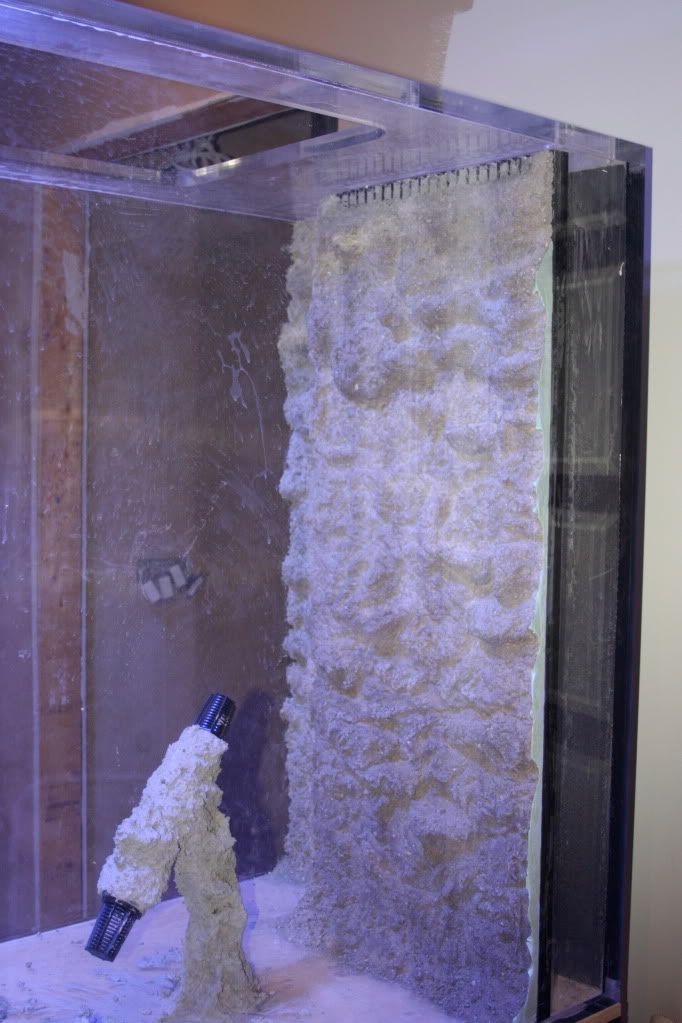
 |
|
#41
|
||||
|
||||
|
Quote:
 Yes, I would use two Abyzz 420 pumps with a controller and call it a day ($4,800.00). You would do fine with two Abyzz 200s or even one if you tune it right. A couple $25 Eductors make it even more fun  http://www.youtube.com/watch?v=wFGASFHEWL8 |
|
#42
|
|||||
|
|||||
|
Sorry, I don't care for the short mechanical wave action and I'm aiming for a more sustained water velocity of 15cm/sec in the mid and lower zones.
__________________
Mitch |
|
#43
|
||||
|
||||
|
The wave video is just a gimmick to show the possibilities. I don't care for the waves either. You can use two pumps on the controller as a closed loop, return pump or drop them right in the tank. You can run them at 5% to keep water moving through the pipe and at the opposing end, run one at 100% for your five hour tidal flow.
|
|
#44
|
||||
|
||||
|
Paul's adaptation of his Revolutions product to an inline solution for you is nothing short of pure genius. His best ideas are inspired from specialized requirements like yours.
Lexan will still warp. I have used lots of these lids over the years. Remember those are the Seaswirl flow limits, not the limits of the Dart to push water through a Seaswirl. I did a 600 gallon acrylic tank (96x30x48) a few years ago, using two darts on 2 OM 4ways, with a Blueline 100 return pump. Flow was excellent. Use an online head loss calculator to make sue you are getting the best out of your system. Use threaded parts where you can so it is easier to adapt to change. |
|
#45
|
|||||
|
|||||
|
Quote:
__________________
180 starfire front, LPS, millipora Doesn't matter how much you have been reading until you take the plunge. You don't know as much as you think. Last edited by Skimmerking; 01-09-2011 at 01:09 AM. |
|
#46
|
||||
|
||||
|
Huh? I had two Oceans Motion 4-ways. The two Darts worked, but since then I have switched to higher pressure pumps like Iwaki an Abyzz DC brushless if the budget can fit them.
I found that a Blueline 70, rated at 1750 GPH moves more water than a Dart with a potential of 3600 GPH, if you have significant friction loss and 1" PVC. I also like the idea of a magnet coupled pump. Sequence are the best of the direct drive pumps, but even with silicon carbide seals, they can leak or cavitate after a few years of use. Here is a picture of the 600 gallon tank showing most of the plumbing. There are two intakes with two strainers on each. Since then I have switched to the same Banjo strainers Mitch is using. The intakes are set up to draw incoming water from the opposing ends of the aquarium, so the left intake returns to the right and vice versa. There are six closed loop returns on the bottom in spiral upwards 45˚ angles. There are four more closed loop returns for a total of ten on the two OM 4-ways (two at the bottom of the end across from the end overflow, and one beside the overflow at the top, and one at the bottom beside the overflow.  There are two closed loop ports to the left of the end overflow (top & bottom).   This is the end without the overflow. The two top ports are for the sump return (Blueline 100) and the two bottom are part of the closed loop. Water exiting here is drawn from the intake at the other end of the tank for additional mixing. The end to end flow across the top assures that there are absolutely no dead spots on the surface. A good test of your system is to add some flake food and see if it either sinks or gets skimmed within 30 seconds. If it gets stuck along the edges, you need to fine tune your plumbing.  My needs were unique with this tank because it is 4' deep/high and as such there is a greater need for moving water to the surface air/water interface for oxygenation. You learn with every tank. It's one of the rewards of the hobby. |
|
#47
|
|||||
|
|||||
|
As I'm not certain as to the success of my proposed setup, I think I'll see how the Dart pumps do before I start saving my pennies for $2000+ pumps.
I realize that the Seaswirl setup is limited by the Seaswirls, not the pump. My biggest challenge is going to be adequately feeding whatever I keep in the tank for corals. Hopefully I can identify some zones where food will accumulate out of the circulation pattern. Thanks.
__________________
Mitch |
|
#48
|
||||
|
||||
|
Don't let me talk you out of your Superdart pumps. They will serve you well for a closed loop system. They just need large plumbing and short runs without nozzle restrictions.
Take an extra day or two to play around with the plumbing before you ad salt & rocks. You will quickly see how they perform with the Seaswirls. You will also see how much force you get out of one lone sump return, alternating sides. You have to strike a balance between flow that reaches the opposite end of the tank without blowing the paint off of the corals on the way there  Your sump return line will need some nozzles to diffuse the flow. I would aim for a maximum of 1,000 GPH out of any one return port, but that's just my personal preference. |
|
#49
|
|||||
|
|||||
|
I was thinking of 2" sump return lines with no nozzles and a gate valve to control the return flow.
How do you think the Dart would handle that? The returns would be pointed along the back wall facing each other on opposite ends. No corals would be placed in the direct flow.
__________________
Mitch |
|
#50
|
||||
|
||||
|
I agree 100% it wasn't designed to do that, just to show how using inlets and outlets correctly can greatly increase the flow potential, and to show that you do not need a dirty great big box in the tank to get far more movement than a wave box could ever achieve.
|